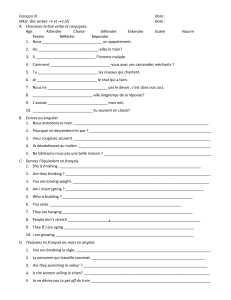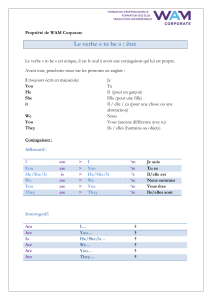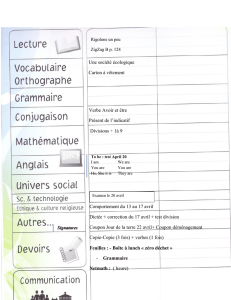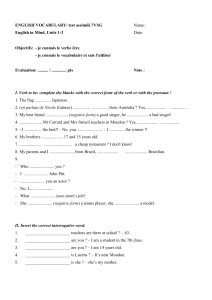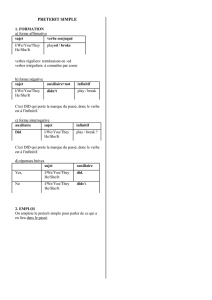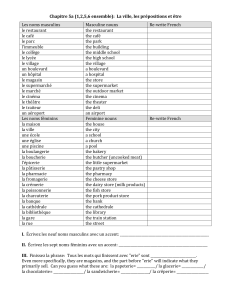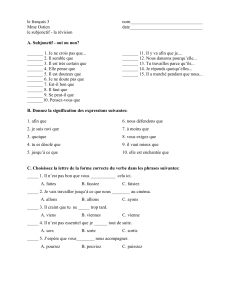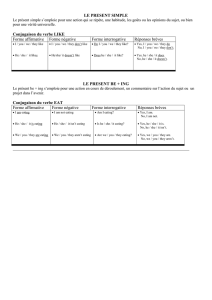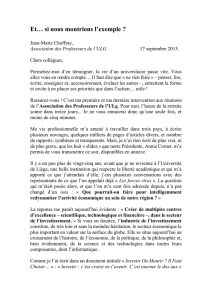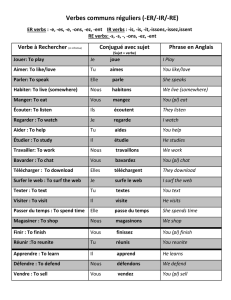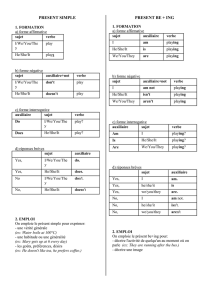4. Present Continuous
publicité
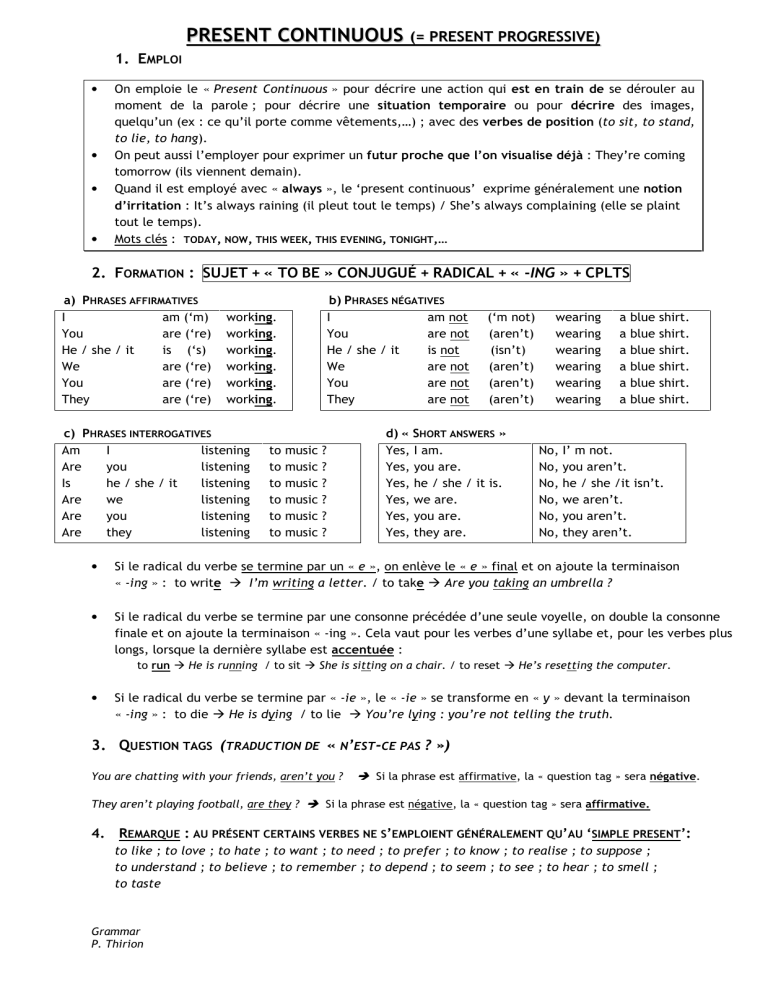
PRESENT CONTINUOUS (= PRESENT PROGRESSIVE) 1. EMPLOI • • • • On emploie le « Present Continuous » pour décrire une action qui est en train de se dérouler au moment de la parole ; pour décrire une situation temporaire ou pour décrire des images, quelqu’un (ex : ce qu’il porte comme vêtements,…) ; avec des verbes de position (to sit, to stand, to lie, to hang). On peut aussi l’employer pour exprimer un futur proche que l’on visualise déjà : They’re coming tomorrow (ils viennent demain). Quand il est employé avec « always », le ‘present continuous’ exprime généralement une notion d’irritation : It’s always raining (il pleut tout le temps) / She’s always complaining (elle se plaint tout le temps). Mots clés : TODAY, NOW, THIS WEEK, THIS EVENING, TONIGHT,… 2. FORMATION : SUJET + « TO BE » CONJUGUÉ + RADICAL + « -ING » + CPLTS a) PHRASES AFFIRMATIVES I am (‘m) You are (‘re) He / she / it is (‘s) We are (‘re) You are (‘re) They are (‘re) b) PHRASES NÉGATIVES I am not You are not He / she / it is not We are not You are not They are not working. working. working. working. working. working. c) PHRASES INTERROGATIVES Am I listening Are you listening Is he / she / it listening Are we listening Are you listening Are they listening to to to to to to music music music music music music ? ? ? ? ? ? (‘m not) (aren’t) (isn’t) (aren’t) (aren’t) (aren’t) d) « SHORT ANSWERS » Yes, I am. Yes, you are. Yes, he / she / it is. Yes, we are. Yes, you are. Yes, they are. wearing wearing wearing wearing wearing wearing a a a a a a blue shirt. blue shirt. blue shirt. blue shirt. blue shirt. blue shirt. No, I’ m not. No, you aren’t. No, he / she /it isn’t. No, we aren’t. No, you aren’t. No, they aren’t. • Si le radical du verbe se termine par un « e », on enlève le « e » final et on ajoute la terminaison « -ing » : to write I’m writing a letter. / to take Are you taking an umbrella ? • Si le radical du verbe se termine par une consonne précédée d’une seule voyelle, on double la consonne finale et on ajoute la terminaison « -ing ». Cela vaut pour les verbes d’une syllabe et, pour les verbes plus longs, lorsque la dernière syllabe est accentuée : to run He is running / to sit She is sitting on a chair. / to reset He’s resetting the computer. • Si le radical du verbe se termine par « -ie », le « -ie » se transforme en « y » devant la terminaison « -ing » : to die He is dying / to lie You’re lying : you’re not telling the truth. 3. QUESTION TAGS (TRADUCTION DE « N’EST-CE PAS ? ») You are chatting with your friends, aren’t you ? Si la phrase est affirmative, la « question tag » sera négative. They aren’t playing football, are they ? Si la phrase est négative, la « question tag » sera affirmative. 4. REMARQUE : AU PRÉSENT CERTAINS VERBES NE S’EMPLOIENT GÉNÉRALEMENT QU’AU ‘SIMPLE PRESENT’: to like ; to love ; to hate ; to want ; to need ; to prefer ; to know ; to realise ; to suppose ; to understand ; to believe ; to remember ; to depend ; to seem ; to see ; to hear ; to smell ; to taste Grammar P. Thirion
